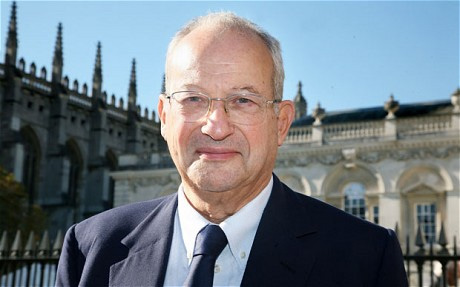



"Impact" may be the buzzword in philanthropy these days, but it’s been at the forefront for nearly half a century for David Sainsbury, now Baron Sainsbury of Turville, whose great-grandfather founded the behemoth supermarket chain. Sainsbury’s Gatsby Charitable Foundation identifies a few tightly-focused areas and creates long-term projects to achieve its goals.
Some 42 years after Gatsby’s first grant—£50 to the Liverpool School of Tropical Medicine—Sainsbury in 2009 became the first Briton whose cumulative donations topped £1 billion. That money is directed into five major areas: basic plant science and neuroscience research to improve food security and mental health; agriculture development in Africa; scientific and engineering education; the Institute for Government and the Centre for Cities; and the arts, which is the particular interest of Sainsbury’s wife, Susie.
Its founder’s years in politics arguably influenced Gatsby’s strategic approach. Sainsbury, born in 1940, was an early member of the short-lived Social Democrat Party in 1981, ultimately rejoining Labour in 1996. As Minister for Science and Innovation, he was the third longest serving minister in Tony Blair’s government.
With that track record, Sainsbury had plenty of time to work out how best to steer major policy change. Accordingly, waiting for the right project to come along isn’t the Gatsby style. Sainsbury maintains that “private foundations should see part of their role as being, in some sense, a research and development arm of the government.” But because foundations such as Gatsby are private, they can often get out ahead of government.
And in some cases, they seek to tell government what to do. Presumably as a reflection of Sainsbury’s years in government, Gatsby has funded two initiatives: the Institute for Government, which works with political parties in Westminster and senior civil servants in Whitehall, to make government more effective; and The Centre for Cities, which produces practical research and policy advice aimed at helping Britain’s cities improve their economic performance.
Some of Gatsby’s projects operate at the scale one might expect of government undertakings. The Sainsbury Laboratory Cambridge University, for example, is home to more than 150 scientists researching plant growth and development, whose mission is to increase agricultural productivity, but in an environmentally sustainable way. Another huge, capital-intensive project is the Sainsbury Wellcome Centre for Neural Circuits and Behaviour at University College London, scheduled to open this year. With such large-scale investments, Sainsbury often seeks to make his money go farther by partnering with a like-minded organization—in this case, the Wellcome Trust.
Gatsby’s efforts range from the building of internationally recognized centers of excellence to smaller-scale educational initiatives. For instance, in the late 1990s there was a widely acknowledged shortage in the UK of qualified graduates for STEM (science technology, engineering, math) jobs. Gatsby highlighted the need for an improved program of practical science in secondary schools, with research that showed about one-quarter of UK schools serving 11-to-16-year-olds lacked even a single physics teacher. Last year, more physics teachers were being trained in England than at any time in the previous 30 years.
When it comes to impact philanthropy, that’s as good as it gets.